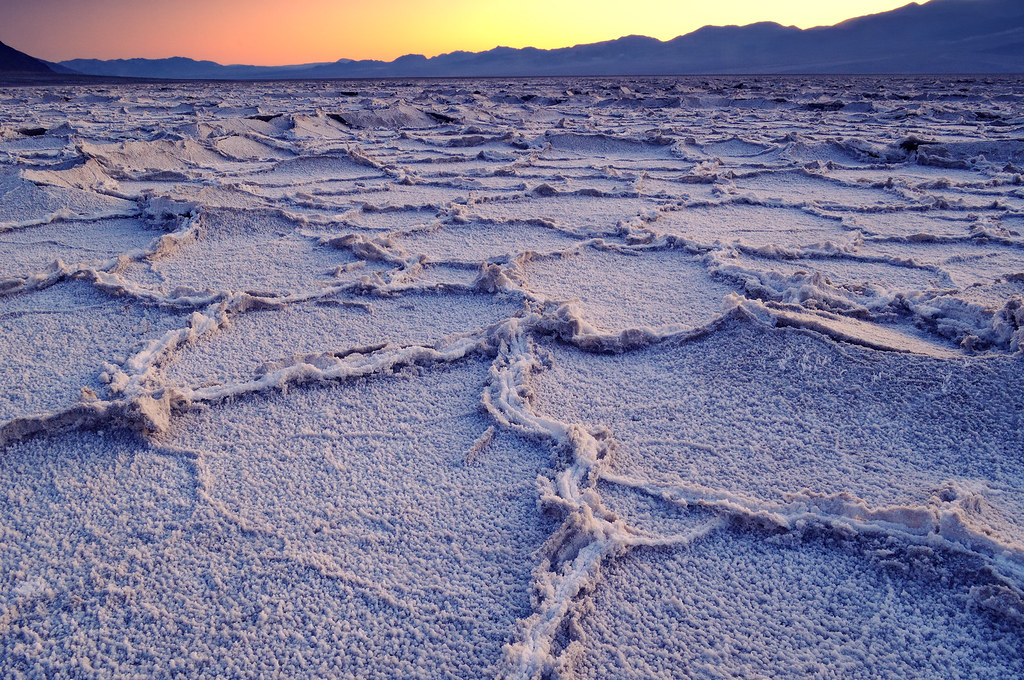
For decades, spectacular honeycomb patterns in salt deserts such as the Badwater Basin in California’s Death Valley and the Uyuni Salt Flats in Bolivia have puzzled tourists, inspired sci-fi films, and mobilized scientists who think they have finally found a solution to this natural problem. puzzles. .
“The fantastical landscape begs an explanation,” notes Lucas Göring, assistant professor of physics at Nottingham Trent University, adding: “We have shown that there is a simple, plausible explanation, just hidden under the surface.”
Have you ever wondered how these fascinating hexagonal patterns appear in salt flats? Surprise no more – we think we’ve found a very convincing explanation. PRX has also discovered this and has just published our paper on the subject. 🧵https://t.co/sFMZYETETa
— Dr. Yana Lasser (@janalasser) March 1, 2023
So, according to a study published a few days ago in the scientific journal Physical Review X, the answer lies in the groundwater beneath the salt crust.
In their study, the researchers describe how layers of water with high and low salt concentrations circulate up and down in round-shaped streams that contract horizontally to form a regular pattern.
Initially, scientists argued that cracks and breaks formed as the surface of the salt expanded and dried out, bending and breaking under pressure.
However, they now point out that previous attempts to understand this characteristic landscape did not take into account the uniform size of the hexagons, which are always 1 to 2 meters in diameter, wherever they are in the world.
A new study confirms the widely held idea that geometric patterns are formed by a mechanism that it’s rooted in basic thermodynamics. “Surface patterns reflect the slow movement of salt water through the soil.

Salt deserts are not places of complete and absolute dryness, as it seems. Beneath the salt surface is a layer of extremely salty water, so shallow that it can be reached by digging with the hand. During the hot summer months, the water evaporates, leaving behind only a “mantle” of salt, some of which dissolves in the next layer of water.
This layer is denser than the one below it, and the salt water sinks into a ring of fresher, less dense water that rises to replace it. The water evaporates and leaves a salt residue that dissolves back into the top layer of water, repeating the cycle.
Salt desert research focuses either on these underground currents or on the earth’s crust. The new study claims that these two characteristics interact and “collaborate” with each other to form this mosaic. The salt “crust” grows faster at the corners of each polygon because it is in contact with saltier water there than in the middle of the hexagons.
According to the scientists, their work was mainly driven by curiosity. “Nature presents us with an obvious and fascinating mystery that piques our curiosity and thus encourages us to solve it – even without any immediate possibility of further application,” said study leader Jana Lasser, a postdoctoral researcher at the Austrian University of Technology.
Source: live science
Source: Kathimerini
Ben is a respected technology journalist and author, known for his in-depth coverage of the latest developments and trends in the field. He works as a writer at 247 news reel, where he is a leading voice in the industry, known for his ability to explain complex technical concepts in an accessible way. He is a go-to source for those looking to stay informed about the latest developments in the world of technology.